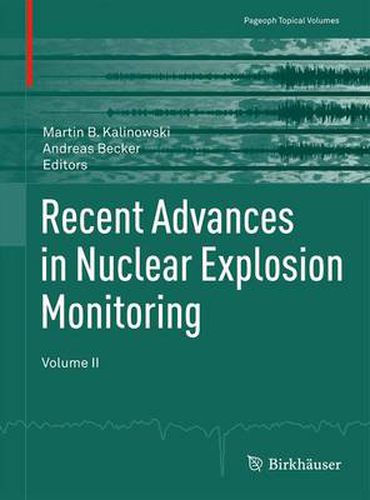Readings Newsletter
Become a Readings Member to make your shopping experience even easier.
Sign in or sign up for free!
You’re not far away from qualifying for FREE standard shipping within Australia
You’ve qualified for FREE standard shipping within Australia
The cart is loading…






This volume is a follow-up of PAGEOPH Topical Volume 167 (2010) and again reports on the latest advances in science and technology that have been achieved to monitor compliance with the Comprehensive Nuclear-Test-Ban Treaty (CTBT). This progress in the development and testing of new sensor technologies and analysis methodologies in all relevant scientific disciplines improves the detection, location and characterization of CTBT-relevant events. In particular the latter poses a challenge for smaller events, where natural or manmade but CTBT-irrelevant sources can generate false positive events. Being able to effectively identify these events while maintaining a minimum risk of missing a nuclear explosion is the overall challenge. The 29 papers in this volume can be structured into 16 waveform studies, eight contributions in the field of radionuclide monitoring and related atmospheric backtracking and five papers related to on-site inspection or overhead detection of relevant events, with many of these originally presented at a special session on Research and Development in Nuclear Explosion Monitoring at the most recent annual General Assemblies of the European Geosciences Union (EGU). The volume addresses the interests of scientists and practitioners whose work is related to the CTBT relevant applications and technologies in the fields of seismology, hydro-acoustics, infra-sound, meteorology and nuclear physics.
$9.00 standard shipping within Australia
FREE standard shipping within Australia for orders over $100.00
Express & International shipping calculated at checkout
This volume is a follow-up of PAGEOPH Topical Volume 167 (2010) and again reports on the latest advances in science and technology that have been achieved to monitor compliance with the Comprehensive Nuclear-Test-Ban Treaty (CTBT). This progress in the development and testing of new sensor technologies and analysis methodologies in all relevant scientific disciplines improves the detection, location and characterization of CTBT-relevant events. In particular the latter poses a challenge for smaller events, where natural or manmade but CTBT-irrelevant sources can generate false positive events. Being able to effectively identify these events while maintaining a minimum risk of missing a nuclear explosion is the overall challenge. The 29 papers in this volume can be structured into 16 waveform studies, eight contributions in the field of radionuclide monitoring and related atmospheric backtracking and five papers related to on-site inspection or overhead detection of relevant events, with many of these originally presented at a special session on Research and Development in Nuclear Explosion Monitoring at the most recent annual General Assemblies of the European Geosciences Union (EGU). The volume addresses the interests of scientists and practitioners whose work is related to the CTBT relevant applications and technologies in the fields of seismology, hydro-acoustics, infra-sound, meteorology and nuclear physics.